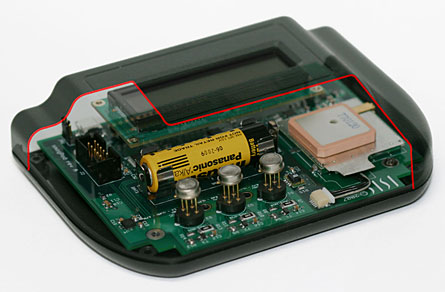Cops Might Get Pollution Sniffers
Normal 0 false false false MicrosoftInternetExplorer4
How clean is the air outside your home, local school, or athletic field?

You’ve undoubtedly heard those news reports — probably several times this summer: It’s a bad air-quality day, so stay indoors as much as possible and avoid strenuous activity if you must go out. But you may have wondered if that really applies to you, particularly.
When the government issues the information that prods air-quality alerts, it’s based
on readings from several air-monitoring stations set up around a city. These
pollution-sensor centers are anchored in place, often fairly high off of the ground, which
puts them well above the intake zone of your sniffer and mine.The state
then takes readings from several stations around town and averages them to
suggest what community residents might encounter.
The problem here: None
of us breathes average air.
We suck in the idiosyncratic mix of pollutants that exist at some particular time and at the precise place we happen to be — sitting beside a secluded stream, walking along a busy highway, enjoying the hammock in our backyard a quarter-mile from some manufacturing plant, or biking past a recycling center. It’s a good bet that the air is considerably and reliably dirtier in some parts of town — or rural regions —than in others. Yet stationary pollutant monitors can’t identify where these spots are.
Which is why Akos Ledeczi is designing small and eminently portable air samplers — ones that street cops could snap onto their belts while patrolling their beats, couriers could strap onto their bikes, or mail trucks could carry on every dashboard. Each of the smaller-than-a-sandwich size devices would collect air-pollution data about once a minute and temporarily store it on a flash drive. Whenever the units fell within range of a Bluetooth-enabled device in the system’s network or wireless relay station, they’d spit out their data.Fitted with a global-positioning-satellite chip, each sensor-packed device knows precisely where it is, and links those coordinates to the air-sampling data collected from each spot, explains Ledeczi, a scientist at Vanderbilt University’s Institute for Software Integrated Systems in Nashville. An on-board accelerometer identifies when the device is moving, and uses that cue to wake up its pollutant sensors. Once all movement stops, the system goes to sleep, prolonging the charge in its battery. (For infinite life, the system can be plugged into a vehicle’s cigarette lighter.) In its snooze mode, the system only momentarily rouses to take readings once an hour.
The goal would be to deploy an army of these things to meander throughout a community, collecting up-to-the-minute, street-level data on air quality.
Right now, however, this system is “a work in progress,” Ledeczi acknowledges. Only five prototypes exist. Still, they’ve been spitting out air-quality readings as they’ve been ferried by cars throughout Nashville. Last Friday, at a Workshop on Environmental Sensing Networks convened at Johns Hopkins University in Baltimore, Ledeczi illustrated how the data could be overlain on maps of a community to depict precise and ultra-local air quality.
Environmental agencies have deployed their stationary existing air-sampling stations relatively sparsely. For example, just 10 stations collect air-quality readings for Nashville’s 526-square-mile area, home to 545,000 people. Results of a locality’s stations are compiled and analyzed. Then, state and local environmental agencies issue a composite air-quality index for the day — a single value that attempts to account for all types of regulated pollutants.
We’d get more useful clues to how risky outdoor conditions were if such data were issued separately for each pollutant, by neighborhood (perhaps superimposed on a local map) and updated hourly. And that’s what Ledeczi’s system hopes to make possible.
One sign that the Vanderbilt units are not ready for prime time: The readings of their gas sensors will, for any given pollutant concentration, fluctuate with temperature. If all of the units from a given manufacture fluctuated comparably under given conditions, an onboard computer chip could account for this, based on the temperature sensor’s data. However, the Swiss firm that made the Vanderbilt system’s sensors hasn’t published data on how to do this, which Ledeczi says may indicate there is substantial variability in the sensitivity of its units.
To keep size and costs down, Ledeczi’s devices also aren’t all that discriminating. They can measure temperature, humidity, ozone, nitrogen dioxide, carbon monoxide, and some general composite mix of volatile organic chemicals, also known as VOCs. But they can’t tell you, for instance, what the specific concentrations are for VOCs of particular interest, such as the carcinogens benzene and benzo(a)pyrene.
Still, it would seem that these or next-generation portable monitors should soon be able to offer the ability to glean a fairly accurate picture of air quality down to the neighborhood level. The down side: Consistently poor-quality air could result in lower property values within a couple-square-block area. Then again, this community and every other neighborhood would also have rock solid ammunition for putting pressure on individual polluters and the local government to clean up our air.
The work by Ledeczi’s team has been supported by a gift from Microsoft Research.





